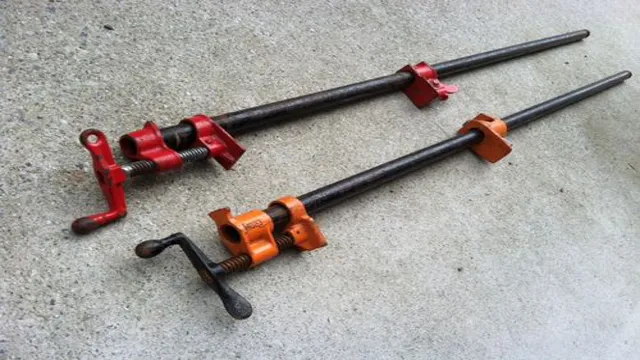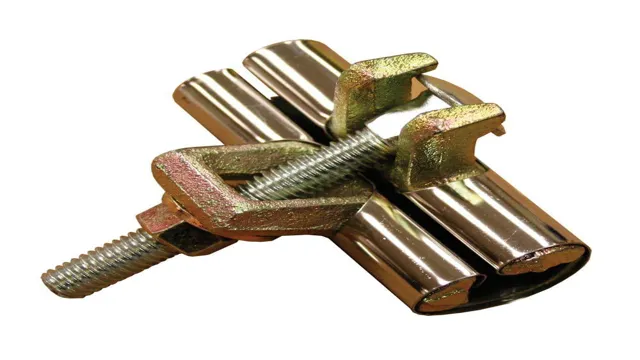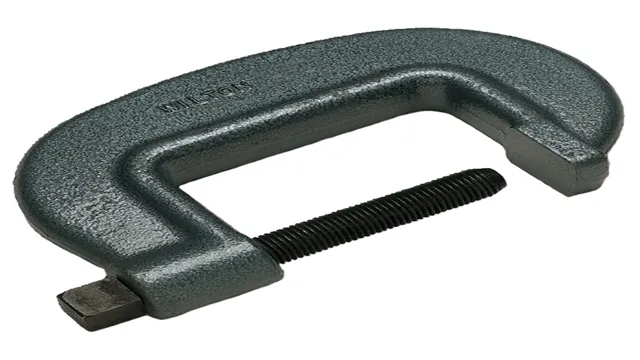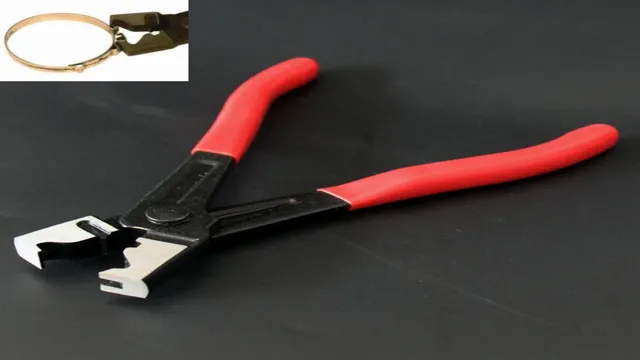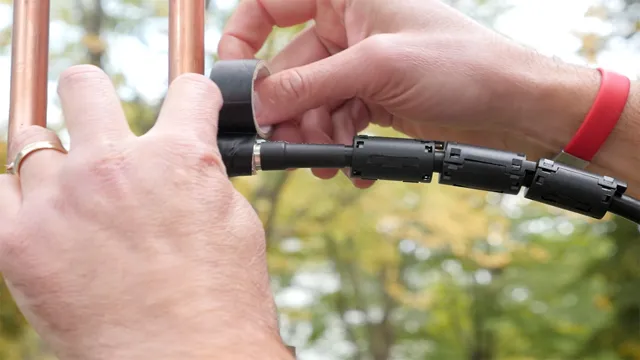How Are Spring Clamps Measured? Tips and Techniques to Get it Right
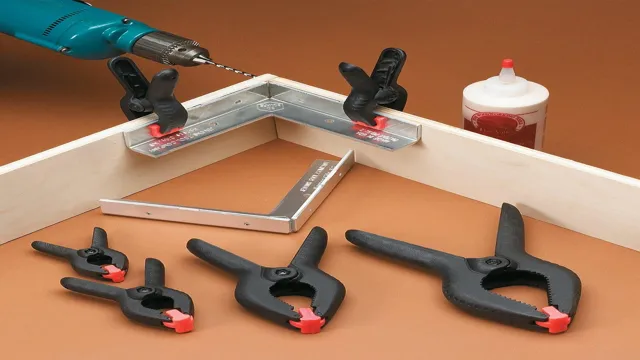
Spring clamps are essential tools used in a wide range of applications. They provide a quick and easy way to secure materials in place, whether you’re working on a woodworking project, assembling furniture, or holding down a tarp. However, if you’re new to using spring clamps, you may be wondering how to measure them correctly.
It’s important to get the proper size of clamp to ensure that it can handle the material you’re working with and provide maximum security. In this blog post, we’ll dive into the details of how spring clamps are measured, so you can make an informed decision when choosing the right clamp for your project.
Understanding Spring Clamps
When it comes to measuring spring clamps, it’s important to consider both the maximum capacity and the opening size. The maximum capacity refers to the amount of pressure the clamp can exert, while the opening size is the distance between the jaws when the clamp is fully open. These measurements are typically listed in inches or millimeters and can be found in the product specifications.
It’s important to choose a clamp with a maximum capacity that matches the needs of the project, while also ensuring that the opening size is large enough to accommodate the materials being clamped. With the right measurements in mind, spring clamps can be a versatile and handy tool for any DIY project or workshop.
What are Spring Clamps?
Spring clamps are a type of tool used in woodworking, metalworking, and other industries to hold objects securely in place during gluing, sawing, sanding, and other tasks. These clamps are designed with a spring mechanism that applies pressure to the object being held, ensuring a tight and secure grip. They come in various sizes and shapes, with jaws made from plastic, metal, or rubber, allowing them to be used for a wide range of applications.
In contrast to traditional clamps, spring clamps are easy to use and do not require a lot of effort to operate, making them ideal for beginners and professionals alike. Whether you need to keep your workpiece stable during drilling or maintain a precise angle while cutting, spring clamps can help you achieve the desired results quickly and easily.
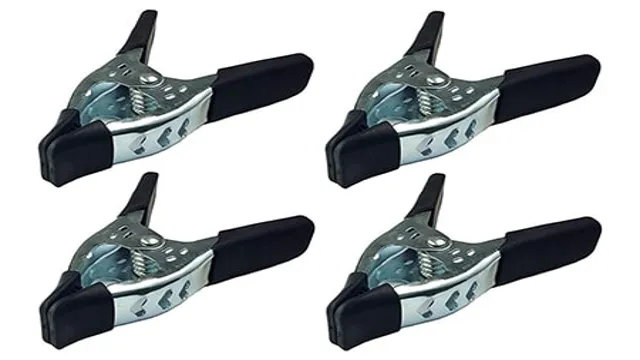
What are they Used for?
Spring clamps are a versatile tool used in various settings such as woodworking, metalworking, welding, and photography. They are a quick and easy way to hold down materials securely and can be used one-handed, making them popular among DIY enthusiasts. With the ability to clamp in tight spaces, spring clamps are perfect for a range of projects.
They come in different sizes and strengths, from small spring clamps for light-duty projects to larger, heavy-duty clamps for more intense jobs. A considerable advantage of spring clamps is that they apply uniform pressure, ensuring that the materials remain in place without damaging the surface. Additionally, they are lightweight and can be easily moved from one project to another, making them a staple tool in any workshop.
Overall, spring clamps are a useful tool to have on hand for anyone in need of a quick and secure way to hold materials in place.
Factors to consider when Measuring Spring Clamps
If you are wondering how to measure spring clamps, there are a few factors to keep in mind. The first thing to consider is the diameter of the clamp’s jaws. This will determine the size and strength of the grip, which is important when selecting the right clamp for your project.
Additionally, the length of the clamp is important to consider, as this will determine the overall reach and flexibility of the tool. The spring strength of the clamp also plays a role in its effectiveness and durability. It is important to choose a clamp with a spring strong enough to hold your materials securely without overstretching or breaking.
Lastly, the material of the clamp should be considered, as certain materials may be more suitable for specific applications. By taking these factors into consideration, you can ensure that you are selecting the right spring clamps for your needs.
Length
When it comes to measuring spring clamps, there are a few factors that you need to consider. One of the essential factors is the length of the clamp. The length of the spring clamp is crucial because it determines the maximum opening of the jaws.
The length also affects the clamping force and the overall strength of the clamp. It is essential to choose a clamp that is long enough to handle the size of the item you are clamping but not too long that it becomes unwieldy. Additionally, a longer clamp typically has a more significant spring force, meaning it can handle stronger tension.
All in all, when measuring spring clamps, always prioritize the length as an important factor in determining the right clamp for the job.
Throat Depth
When measuring spring clamps, there are several factors to consider, and one important one is the throat depth. This is the distance between the top of the clamp and the pivot point where the jaws meet. The throat depth is crucial because it determines how much clearance a clamp has, which can affect its overall versatility and functionality.
If the throat depth is shallow, the clamp will have limited reach and may not be able to grip larger objects. On the other hand, if the throat depth is deep, the clamp can hold more substantial items, but its range of motion may be reduced. It’s essential to strike a balance between the two and choose a clamp with a throat depth that fits your specific needs.
Remember that deeper throats also mean that clamps may be bulkier and heavier, so consider the application before making a final decision. Overall, when measuring spring clamps, make sure to pay close attention to the throat depth and ensure that it matches the task at hand.
Clamping Force
When it comes to measuring spring clamps, there are several factors to consider, with clamping force being one of the most important. Clamping force refers to the amount of pressure that a clamp can apply to an object, and it is typically measured in pounds or kilograms. To determine the clamping force of a spring clamp, you will need to consider several variables, including the strength and thickness of the spring, the size and shape of the clamping surface, and the amount of force that is required to open and close the clamp.
Additionally, it is important to ensure that the clamp is being used for the correct application, as using a clamp with insufficient clamping force could result in damage or failure. By carefully considering these factors, you can ensure that you are using a spring clamp that is strong enough for your needs, and that will provide reliable and consistent performance over time.
How to Measure Spring Clamps?
If you’re wondering how to measure spring clamps, you’ll be pleased to know that it’s relatively straightforward. These types of clamps are called “spring” clamps because they have a spring mechanism that allows them to be easily clamped and unclamped. The first step in measuring a spring clamp is to measure its gripping capacity, which is the maximum width that it can clamp down on.
This is typically measured from the inside edges of the clamp’s jaws. Next, you’ll want to measure the length of the clamp, which is often given in inches or centimeters. Finally, you may want to measure the strength of the spring, which is typically given in pounds or kilograms.
This will give you a better idea of how much force is required to open and close the clamp. With these measurements in hand, you’ll be able to choose the right spring clamps for your specific needs, whether you’re using them for woodworking, metalworking, or any other application that requires strong and precise clamping.
Step-by-Step Guide
If you’re dealing with a spring clamp, then you might need to measure it at some point. It’s important to know the size of the clamp that you’re using, as it affects the amount of force that it can provide. Fortunately, measuring spring clamps is a straightforward process that doesn’t require any special tools.
You’ll just need a ruler or a tape measure to get started. The first thing you should do is measure the length of the clamp, which is the distance between the two jaws when they’re fully closed. This will give you an idea of the size of the clamp.
Next, measure the width of the jaws, which is the distance between the two tips of the clamps. This will give you an idea of how much surface area the clamp can cover. Finally, measure the thickness of the steel wire used to make the clamp.
This will give you an idea of the strength of the clamp. By measuring these three things, you’ll have a good idea of the capabilities of your spring clamp, and you’ll be able to choose the right one for the job at hand.
Using a Tape Measure
If you’re working on a project that requires spring clamps, it’s essential to know how to measure them correctly. To start, find a tape measure and extend it to its full length. Then, place one end of the tape on the base of the clamp and measure to the tip of the other side.
This measurement will give you the length of the clamp. Next, measure the maximum opening of the clamp by placing the tape on one side of the clamp’s jaw and extending it to the other side. This measurement indicates how wide the clamp can open.
By knowing these two measurements, you can select the right size clamp for your project and ensure a secure grip. Remember to take your time when measuring and double-check your numbers to prevent mistakes. With practice, measuring spring clamps will be a breeze!
Using a Micrometer
If you are working with spring clamps, it’s essential to know precisely how to measure them to ensure a proper fit for your project. One ideal tool to use for measuring spring clamps is a micrometer. A micrometer offers high accuracy, and it’s easy to use.
First, ensure the micrometer is set to the appropriate size range. Next, insert the spring clamp between the micrometer jaws. Gently close the jaws until they touch the clamp.
Read the measurement on the micrometer’s scale, ensuring that you get an accurate measurement. By using a micrometer to measure your spring clamp, you’ll be able to determine precisely what size you need and avoid any issues during your project.
Conclusion
In spring clamps, size really does matter. But don’t worry, it’s not about length or girth. Instead, spring clamps are measured by the opening capacity of their jaws.
So be sure to choose the right size for your project, otherwise you might end up with a clamp that just won’t hold tight. Remember, with spring clamps, it’s not about the size of the tool, it’s about how you use it.”
FAQs
What are spring clamps used for?
Spring clamps are commonly used to hold objects together or secure items temporarily in place.
How do you measure the strength of a spring clamp?
The strength of a spring clamp can be measured by the amount of pressure or force it can apply or hold.
What is the maximum jaw opening of a typical spring clamp?
The maximum jaw opening of a typical spring clamp can vary, but it is usually around 2-3 inches.
What are the different types of spring clamps available?
Some common types of spring clamps include C-clamps, metal spring clamps, and plastic spring clamps.
Can spring clamps be used outdoors?
Yes, spring clamps can be used outdoors, but it is important to consider the material and strength of the clamp to ensure it will hold up to the outdoor environment.
How do you choose the right size of spring clamp for your project?
The right size of spring clamp will depend on the size and shape of the objects you want to hold together. Consider the maximum jaw opening and strength of the clamp when choosing the size.
Are spring clamps easy to use?
Yes, spring clamps are generally easy to use and require minimal effort to apply and release.

